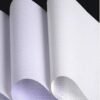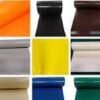Inflatable boats have long been a popular choice for water enthusiasts, from casual kayakers to serious adventurers and commercial users. One of the key factors that contribute to their success is the fabric used in their construction. Over the years, advancements in inflatable boat fabric technology have significantly improved performance, durability, and overall user experience. Today, we’ll take a closer look at how technology has revolutionized boat fabrics, leading to better materials, greater resistance to wear and tear, and enhanced comfort for users.
The Evolution of Inflatable Boat Fabric
In the early days, inflatable boats were primarily made using basic rubber materials. These were effective but lacked the strength, flexibility, and UV resistance needed for long-lasting performance in various conditions. Over time, manufacturers began exploring more advanced materials like PVC (Polyvinyl Chloride) and Hypalon, a synthetic rubber known for its excellent durability.
Today, the latest fabric technologies incorporate multi-layer constructions, innovative coatings, and better treatments to address the limitations of earlier materials. The result? Fabrics that are lighter, stronger, more resistant to abrasion, and capable of withstanding a wide range of environmental conditions, from intense UV rays to the harsh saltwater environment.

Key Innovations in Inflatable Boat Fabric Technology
1. Polyester and PVC Composite Fabrics
One of the most significant advancements in inflatable boat fabric technology is the use of composite materials like polyester and PVC. These fabrics offer a perfect balance of lightweight design and durability. Polyester fibers are typically woven into a tight, strong mesh, which is then coated with PVC to create a smooth, waterproof surface. This combination provides superior resistance to punctures, tears, and abrasions while remaining flexible enough to roll up for easy storage.
In addition to this, polyester-PVC composites are UV-resistant and can handle exposure to the sun for prolonged periods without degrading. This makes them an excellent choice for inflatable boats used in sunny climates, offering long-lasting performance without the need for constant repairs.
2. Hypalon-Style Coatings
Another important innovation in inflatable boat fabric technology is the development of fabrics that use synthetic rubber coatings like Hypalon. While Hypalon was once a popular fabric for inflatable boats, its production has been phased out due to environmental concerns. However, manufacturers have found ways to replicate its impressive features by using modern alternatives, such as CSM (Chlorosulfonated Polyethylene) coatings, which mimic the performance of Hypalon without its negative environmental impact.
CSM coatings provide exceptional UV resistance, chemical resistance, and durability. These fabrics are also highly resistant to fading, cracking, and damage from exposure to saltwater. This makes them ideal for inflatable boats used in coastal or open-sea environments.
3. Dual-Layer Fabrics
The dual-layer construction is another notable advancement in inflatable boat fabric technology. Unlike single-layer fabrics, dual-layer fabrics feature two layers of material bonded together, providing additional strength and protection. The inner layer is typically designed to offer resistance to punctures, while the outer layer is treated for UV resistance and abrasion protection.
Dual-layer fabrics significantly improve the structural integrity of inflatable boats, making them more resistant to damage caused by rocks, sharp objects, and rough water. This added durability ensures that boat owners spend less time on repairs and more time enjoying their boat.
4. Fabric with Anti-Microbial Coatings
An emerging trend in inflatable boat fabric technology is the use of anti-microbial coatings. These coatings prevent the growth of bacteria, mold, and mildew, which can cause unpleasant odors, deterioration of the fabric, and other health hazards. Anti-microbial treatments are especially useful in humid or damp environments, where mold and mildew growth can be a persistent problem.
Incorporating anti-microbial agents into the fabric also helps maintain the appearance of the boat, keeping it looking clean and fresh even after prolonged exposure to water. This innovation enhances the overall lifespan of inflatable boats and reduces the maintenance required to keep them in optimal condition.
5. Inflatable Boat Fabrics with Reinforced Protection
Another exciting development is the addition of reinforced protection layers, which help prevent damage from impacts or abrasions. Fabrics are now often integrated with additional protective layers that offer resistance to punctures, abrasions, and general wear-and-tear. These reinforcements are often made of high-strength polymers, such as aramid fibers (used in bulletproof vests), which are incredibly tough while still being lightweight.
Reinforced boat fabrics can withstand rougher conditions, including high-speed trips, abrasive shorelines, and the occasional contact with rocks or other submerged objects. For those who regularly use their inflatable boats in rugged or challenging environments, reinforced protection is a game-changer.
6. Eco-Friendly Materials
With growing awareness of environmental sustainability, the inflatable boat industry is also seeing a shift toward eco-friendly materials. Manufacturers are exploring biodegradable or recyclable fabric options that don’t sacrifice performance or durability. Eco-friendly fabrics typically use natural fibers or non-toxic coatings to minimize their environmental impact, making them a popular choice among eco-conscious boaters.
As the demand for greener options increases, it’s likely that we will see further innovations in the use of sustainable materials in inflatable boat construction, aligning with global efforts to reduce waste and promote environmental responsibility.
Future of Inflatable Boat Fabric Technology
The future of inflatable boat fabric technology is likely to be shaped by ongoing advancements in material science, including the development of even stronger, lighter, and more versatile fabrics. We may also see the continued integration of smart technologies into inflatable boats, such as fabrics embedded with sensors to monitor air pressure, fabric integrity, or exposure to UV light.
Moreover, innovations in nanotechnology could lead to fabrics with self-healing capabilities, allowing minor cuts or punctures to repair themselves over time, further extending the lifespan of inflatable boats.
Conclusion
Innovative advances in inflatable boat fabric technology have significantly enhanced the performance, durability, and usability of these boats. From stronger, more resilient fabrics to eco-friendly materials and anti-microbial coatings, inflatable boat technology continues to evolve. As these advancements continue, we can expect even more durable, sustainable, and user-friendly options for water enthusiasts around the world.
Incorporating these new fabric technologies into the design of inflatable boats ensures that boat owners can enjoy reliable, long-lasting performance regardless of their environment or intended use. Whether for leisurely fishing trips, intense whitewater adventures, or long-distance voyages, the future of inflatable boat fabrics looks promising and exciting.










Leave a reply